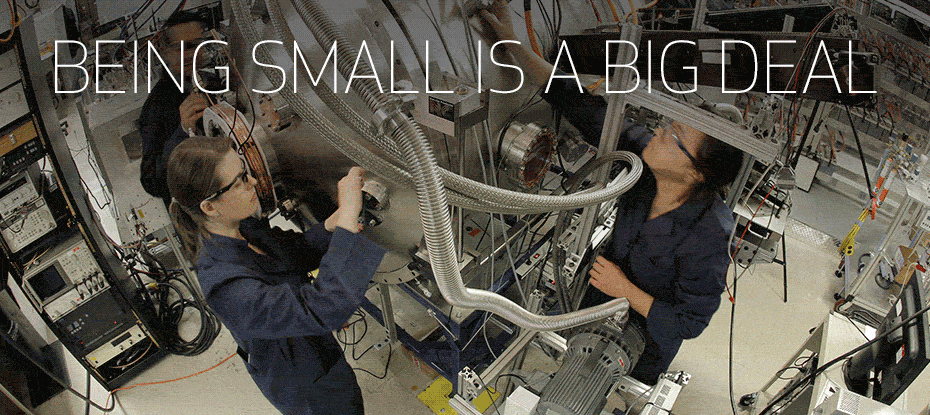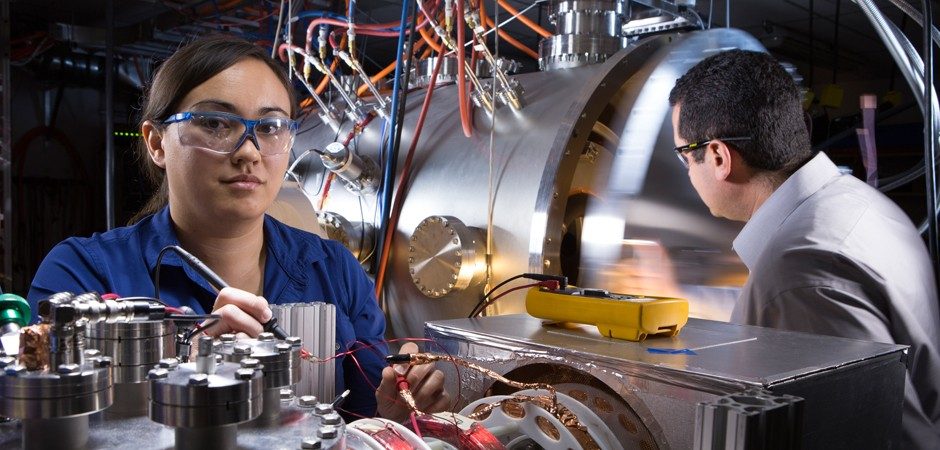Fusion vs. Fission
More than 50 years ago, nuclear power through fission was the excitement of its day. People tried using it to power almost everything, even planes. In the end, operational hurdles prevented fission from widespread use.
While fission continues to power our nuclear reactors today, fusion offers a cleaner, safer source of energy.
Fission occurs when one atom is split into two smaller fragments, creating an explosion of sorts and resulting in the release of heat energy.
Fusion is the process by which a gas is heated up and separated into its ions and electrons. When the ions get hot enough, they can overcome their mutual repulsion and collide, fusing together. When this happens, they release a lot of energy – about one million times more powerful than a chemical reaction and 3-4 times more powerful than a fission reaction.
Energy created through fusion is 3-4 times more powerful than the energy released by fission.
How Compact Fusion Works
Nuclear fusion is the process by which the sun works. Our concept will mimic that process within a compact magnetic container and release energy in a controlled fashion to produce power we can use.
A reactor small enough to fit on a truck could provide enough power for a small city of up to 100,000 people.
Building on more than 60 years of fusion research, the Lockheed Martin Skunk Works approach to compact fusion is a high beta concept. This concept uses a high fraction of the magnetic field pressure, or all of its potential, so we can make our devices 10 times smaller than previous concepts. That means we can replace a device that must be housed in a large building with one that can fit on the back of a truck.


To mimic the energy created by the sun and control it here on earth, we’re creating a concept that can be contained using a magnetic bottle. The bottle is able to handle extremely hot temperatures, reaching hundreds of millions of degrees. By containing this reaction, we can release it in a controlled fashion to create energy we can use.
The heat energy created using this compact fusion reactor will drive turbine generators by replacing the combustion chambers with simple heat exchangers. In turn, the turbines will then generate electricity or the propulsive power for a number of applications.
Rapid design cycles allow for less conservative design choices, faster consideration of alternatives, less capital, and the ability to maintain momentum moving forward with constant progress.










